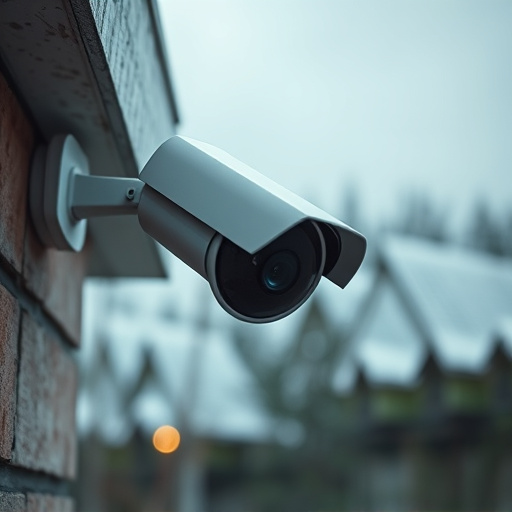Optimal placement of fake security cameras at or slightly above eye level creates a powerful psychological deterrent to intruders, enhancing security without extensive physical measures. Key considerations include clear line of sight, unobstructed view, and avoiding common blind spots. Regular testing, cleaning, and inspection ensure the system remains effective with realistic camera height positioning as the critical strategic element.
“Enhance your property’s security without breaking the bank with our comprehensive guide on installing fake security cameras. Learn the art of strategic placement, ensuring optimal angles and realistic appearances for maximum deterrence. Understand the critical factors of camera height, tailored to your property’s unique layout. We’ll walk you through a step-by-step installation process and provide tips for testing and maintaining these decoy systems. Elevate your home or business’s security posture with this practical, cost-effective solution.”
- Understanding Fake Security Camera Placement Requirements
- Assessing Your Property for Ideal Camera Height
- Installing the Fake Camera: Step-by-Step Guide
- Testing and Maintaining Your Decoy Security System
Understanding Fake Security Camera Placement Requirements
When installing a fake security camera, understanding the placement requirements is crucial for its effectiveness. The most critical factor is height—a fake security camera should ideally be placed at eye level or slightly elevated to mimic real surveillance equipment. This strategic positioning helps create an illusion of constant observation, deterring potential intruders.
In addition to height, consider the camera’s field of view. Positioning it with a clear line of sight towards areas you want to monitor is essential. Avoid obstructed views and ensure the camera captures significant portions of the space or area it’s designed to protect. Proper placement will enhance the psychological effect of surveillance, serving as a powerful deterrent without requiring extensive physical security measures.
Assessing Your Property for Ideal Camera Height
When planning a fake security camera installation, assessing your property for the ideal camera height is crucial. Start by considering the layout and features of your outdoor space. Different types of areas—such as front yards, backyards, or entryways—may require varied camera positioning to maximize visibility. Think about obstacles like trees, fences, or structures that could obscure the camera’s view. The best fake security camera height placement offers a clear, unobstructed line of sight to any potential threats or intruders.
For optimal results, aim for a camera height that allows it to capture a wide field of view without being easily defied by surrounding elements. Typically, this means positioning your fake security cameras at eye level or slightly elevated. This strategic placement ensures comprehensive coverage while also avoiding common blind spots that real security cameras often encounter due to their fixed nature.
Installing the Fake Camera: Step-by-Step Guide
Installing a fake security camera is a simple process that can significantly enhance home or business security while maintaining an unassuming presence. Here’s a step-by-step guide for installing your fake security camera, focusing on optimal fake security camera height placement:
1. Begin by thoroughly reading the instructions provided with your camera. Each model may have unique features and requirements. Identify the mounting options available, typically including wall mounts or stands.
2. Choose a strategic location for your camera. For exterior applications, consider placing it near entry points, windows, or areas with high foot traffic. In interior spaces, aim for corridors, reception areas, or common gathering spots. Remember, the fake security camera height placement is key; place it at eye level or slightly above to maximize its deterrent effect.
Testing and Maintaining Your Decoy Security System
To ensure your decoy security system remains effective, periodic testing and maintenance are crucial. Start by simulating various scenarios to check if potential intruders would engage with the fake cameras as intended. Move around the installed locations, trying different angles and times of day, to verify that the system triggers alerts or recordings accurately. The placement of fake security cameras, especially their height, plays a significant role in this process; they should be positioned at eye level or slightly elevated to mimic real surveillance equipment, thus deterring any would-be thieves or vandals.
Regular cleaning and inspection are also vital components of maintenance. Dust and debris can affect the functionality of both genuine and fake cameras, so keeping them clear ensures optimal performance. Check for any signs of damage or wear, replacing parts as necessary to maintain realism. This routine upkeep will not only keep your decoy system reliable but also extend its lifespan, providing continuous protection for your property.
A well-placed fake security camera can significantly deter potential intruders. By understanding the optimal height for these decoys and following a structured installation guide, homeowners can enhance their property’s security without breaking the bank. The article has provided essential insights into selecting the right placement, installing the fake camera, and maintaining its effectiveness, ensuring that both your home and peace of mind are well-protected.
